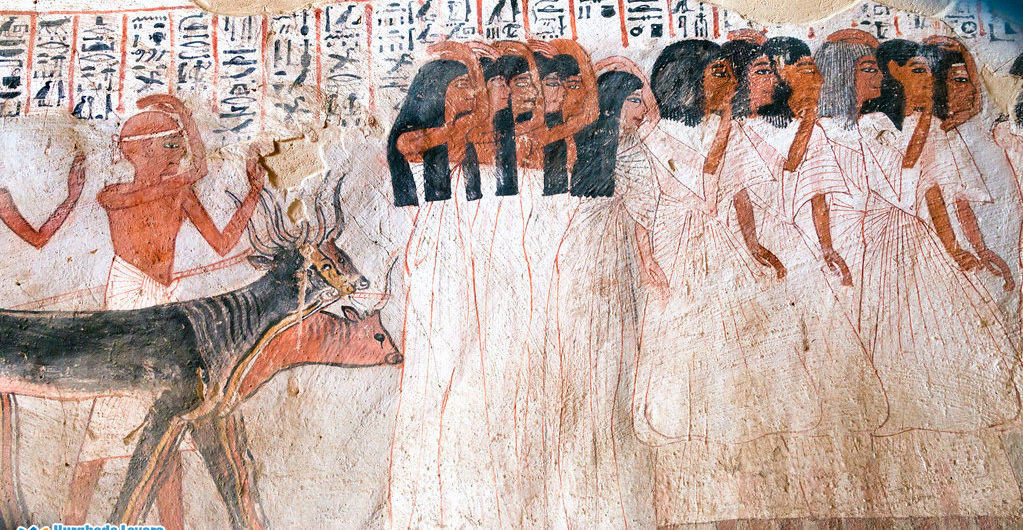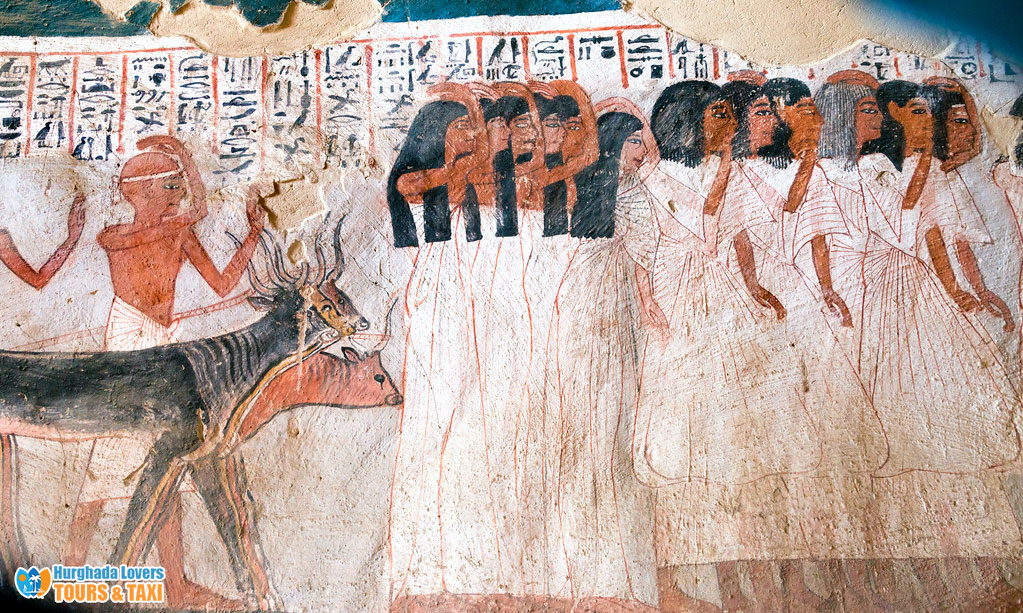Tomb of Roy in Tombs of Draa Abu Al-Naja – Theban Tombs, Luxor, Egypt – Egyptian Tombs
The most famous Egyptian Pharaonic tombs in the ancient Egyptian civilization, he worked as the general supervisor and scribe of crops and livestock for the king’s storehouses and the temple of the God Amun, the most famous of the Egyptian deities – Ancient Egyptian gods and Goddesses during the reign of King Horemheb, the most famous of the Egyptian Pharaohs kings of the Eighteenth Dynasty of Egypt in the The New Kingdom of Egypt.
Discover the history of the Pharaonic civilization “Ancient Egypt History” and the construction of the most beautiful Pharaonic tombs of the nobles in the necropolis of Dra Abu el-Naga, Thebes, Luxor, the ancient Egyptian Pharaonic civilization.
Tomb of Roy Facts
Facts about the ancient Egyptian civilization and secrets about the tomb of the royal scribe in the 18th Pharaonic dynasty and its interior design and the inscriptions that were discovered to tell us about the development of Agriculture in Ancient Egypt and Industry in ancient Egypt and visiting times and entry ticket prices and more to start your tourist trip to the tourist attractions in Luxor in addition to visiting the tourist attractions in archaeological Egypt.
Cemetery number= TT255.
Roy’s tomb is small and contains a burial chamber.
Who is Roy?
A royal scribe in the era of King Horemheb “He has Tomb of Horemheb | KV57 within the tombs of the Valley of the Kings and the Tomb of Horemheb – Saqqara and The Speos Of Horemheb in Aswan” One of the famous ancient pharaohs of the 18th Pharaonic dynasty
Roy holds a number of titles that he obtained during his work, including::
Hereditary Prince.
Head Butler.
Seal bearer of the King of Lower and Upper Egypt as in the Geography of ancient Egypt.
Royal Writer
Roy tomb inscription:
You will see on the walls of the tomb unique pharaonic engravings that still retain all their colors until now, such as engravings of how to bury the fish from the lake and the birds, in addition to the stages of burying the dead with a funeral procession from the deceased’s family, as in the Ancient Egyptian religion, and how the daily life of the ancient Egyptians was, family and agriculture..
You will see an engraving on the left wall of the tomb entrance of scenes of Roy and his wife in front of a man with a calf, in addition to another engraving of the daily life of the ancient Egyptians, plowing the land and harvesting flax, then engravings of the ancient Egyptian goddesses such as the God Hathor and the God Anubis and the titles that Roy and his wife received as in the legends of the pharaohs “Egyptian Mythology” and stories of Ancient Egyptian Literature.
Moving forward a little, you will see 5 scenes from the Book of Gates, where there is an engraving of a worker supervising the king’s grain store, then an engraving of Roy with his wife during the worship of Hathor and Horakhty, then an engraving of the god Horus with Roy and his wife for the stage of wearing the heart in the second life after death to begin their presentation before the God Osiris, God Isis and God Nephthys..
You will see an engraving of a funeral procession for the burial of the pharaohs’ Mummy, a group of people and priests for the stages of burying the deceased in a pyramid-shaped tomb..
On the right wall there are engravings and scenes of the priests and family flocking to the stages of mourning the deceased, in addition to an engraving of how the social banquet was in ancient Pharaonic civilization for eating Food in ancient Egypt.
Roy cemetery design map?
The architectural design of the tomb begins with a 55-meter-wide courtyard, then a staircase goes down to see 18 entrances..
A well 11m deep was dug in the northern corner and a well in the southern corner..
Inside the tomb you will see a domed chamber, fully built of mud bricks, with a private water well, indicating the development of the art of Sculpture in Ancient Egypt and the arts of Architecture in ancient Egypt.
It was discovered that the tomb contains 6 tombs in the courtyard, where one of these tombs was opened and it belongs to a person called Shesb who worked as a scribe in the king’s grain storehouse..
The tomb contains one decorated burial chamber..
Roy’s Tomb Discoveries:
A large collection of Egyptian Ushabti Statue was found..
Mask made of cardboard.
50 funerary seals of people whose graves are unknown in the area.
Coin “Ancient Egyptian Coins” from the Ptolemaic Kingdom during the reign of Ptolemy II.
Ancient Egyptian Papyrus written in the ancient Egyptian hieratic language “Ancient Egyptian Language”
A set of pottery.
A group of limestone pot covers “Ancient Egyptian Metallurgy” in the shape of a monkey “God Hapi”“
A statue of the royal scribe Roy was discovered with a tablet with texts that are now on display in The Metropolitan Museum of Art in New York, USA..
Where is Roy’s cemetery located?
Tombs of Dra Abu el-Naga, Thebes, Luxor, Egypt.
Visiting hours:
Daily: 06:00 AM to 05:00 PM.
Entrance ticket prices :
Note: Facts and secrets of the history will be added soon…
Hurghada Excursions Lovers, Best Travel Agency in Hurghada to provide daily tours to visit the Tourist attractions of Luxor by Hurghada to Luxor Tours and Hurghada to Pyramids Trips. Book online when you come to Hurghada, El Gouna, Sahl Hashish, Makadi Bay, Soma Bay, Egypt Tours Packages.
Tomb of Roy TT255 Luxor Egypt | The history of the construction of the most beautiful tombs of nobles in the Tombs of Draa Abu Al-Naja in Thebes

